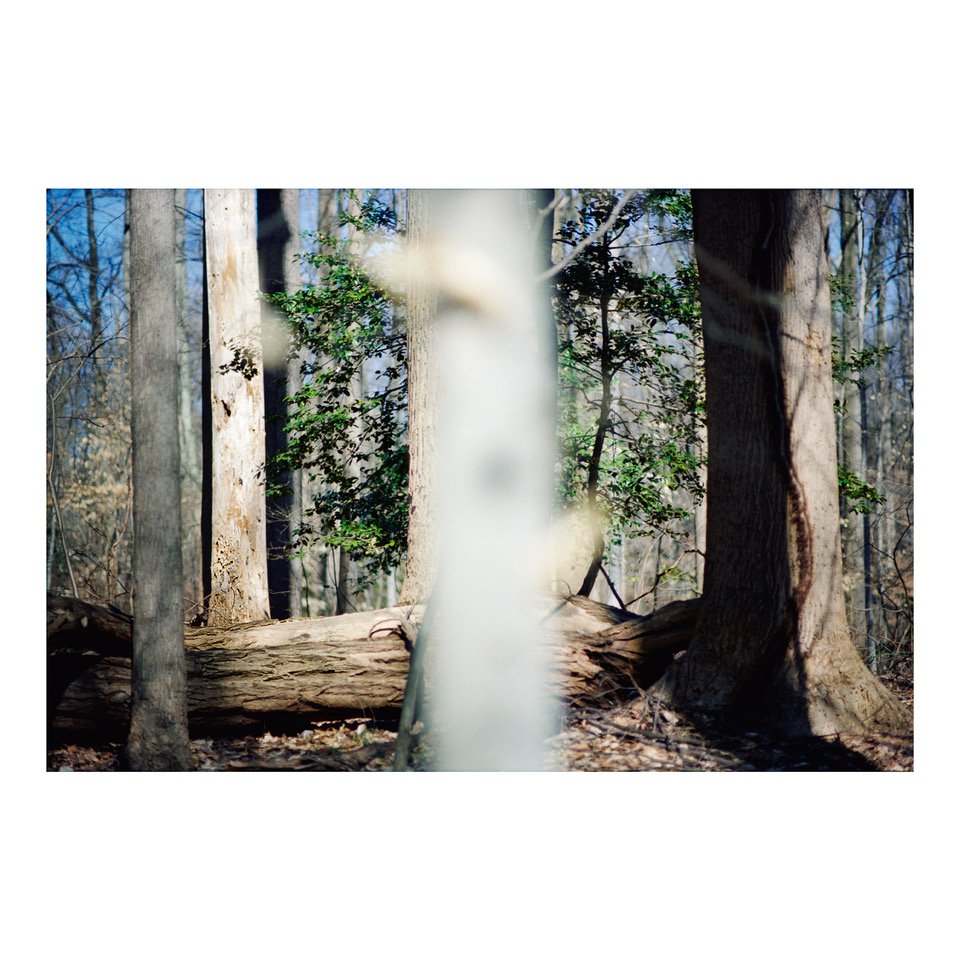Beatrice Dillon starts her own label — HI — featuring Explore Ensemble on its first release: Seven Reorganisations. Beatrice’s first entirely acoustic work, commissioned by Mark Fell for No Bounds Festival, is presented in both live and studio form. Artwork by Terri Weifenbach.
Limited edition LP
Beatrice Dillon 'Seven Reorganisations' (HI) 2024 Performed by Explore Ensemble
A1. Seven Reorganisations I
A2. Seven Reorganisations II
B1. Seven Reorganisations I (Live version)
B2. Seven Reorganisations II (Live version)
Explore Ensemble:
Piano - Siwan Rhys
Bass Flute - Taylor MacLennan
Bass Clarinet - Alex Roberts
Violin - David López Ibáñez
Viola - Morag Robertson
Cello - Deni Teo
Artistic director - Nicholas Moroz
A Recorded by Nicholas Moroz and Patrick Collier, London 2024
B Recorded at ZKM Karlsruhe co-produced with SWR Experimentalstudio, Freiburg 2023
Written and produced by Beatrice Dillon
Mixed by Nicholas Moroz and Beatrice Dillon
Mastered by Rashad Becker
Cover photograph from the series “Woods” courtesy of Terri Weifenbach represented by TheLink Mgmt
Label: HI
Catalogue: HI001
Release Date: Nov 2024
Boomkat’s Product Review:
Beatrice Dillon mints her new label with her first entirely acoustic work, performed by Explore Ensemble and commissioned by Mark Fell. Stunning, major work, RIYL CC Hennix, John Cage, Pascale Criton, Helmut Lachenmann, Morton Feldman.
The naturally open-ended navigation of themes in Seven Reorganisations is exemplary of an artist whose thoughtfully considered catalogue is hailed among the most notable in modern experimental music. Beatrice Dillon’s first entirely acoustic composition allows her ideas on fundamentals of space and light, structure and tone, to unfold in beguiling, inspirational new directions unveiling whole new facets of a musical vision that continues to reveal itself with each new release.
Derived from a Mark Fell commission, the album features a version recorded in a London studio setting, and another taken as a live recording made at ZKM Karlsruhe in 2023. The same compositions are here articulated by the same performers, distinguished by subtle alterations of atmosphere and dynamics on each side. The studio parts remain tethered to Beatrice’s practice with the use of discrete edits of drily close-mic’d parts judiciously rearranged across the stereo field with a near-hallucinatory minimalism. In exquisite juxtaposition, the live iteration relinquishes that control to Explore Ensemble’s sextet of players cycling the piece’s musical cells in a reverberant room. The recordings encourage listeners to revel in psychoacoustic frissons of overtones and microtonal, timbral intricacy, whilst also highlighting the way her score appears to prompt the performers to stop, breathe, listen and look around them, before deciding where to go next.
The schisms of fixedness and ephemerality to Seven Reorganisations are surely in keeping with Dillon’s enduring obsessions with structure and motion in organised sound, but can also be attributed to an ever expanding grasp of interrelated artforms. Extramusical cues from W.R. Bion’s psychoanalytic assertion “Inability to tolerate empty space limits the amount of space available”, and the deconstructionist philosophy of S. Korea’s Byung Chul-Han’s statement, “Leaving things out, to better hear what’s kept in”, are guiding principles as much as the misty depth perception found in Hasegawa Tohaku’s C.16th Japanese folding screens, or the shifting focal points of Terri Weifenbach’s photography (as featured on this album’s cover). Perfect metaphors for the way the composition and mixing seduces you into its filigree detail and use of negative space - the listener activating its latent detail.
Comparable to Cage’s ‘In a Landscape’ in its etheric, harmonious beauty, or Pascale Criton’s ‘INFRA’ in how the music feels out the spaces in-between, Beatrice’s clean diversion from club music exposes a related, but whole other, architecture of sound that propels the imagination, embodied in reverie. Close listening rewards with passages of frankly astonishing iridescent beauty in the arp flutters of ‘Seven Reorganisations I’ and sublime tension of its lulled lacunæ in ‘Seven Reorganisations II’, with an absence of repeating melody that makes return journeys feel like revisiting a perpetually unresolved, waking dreamscape.

